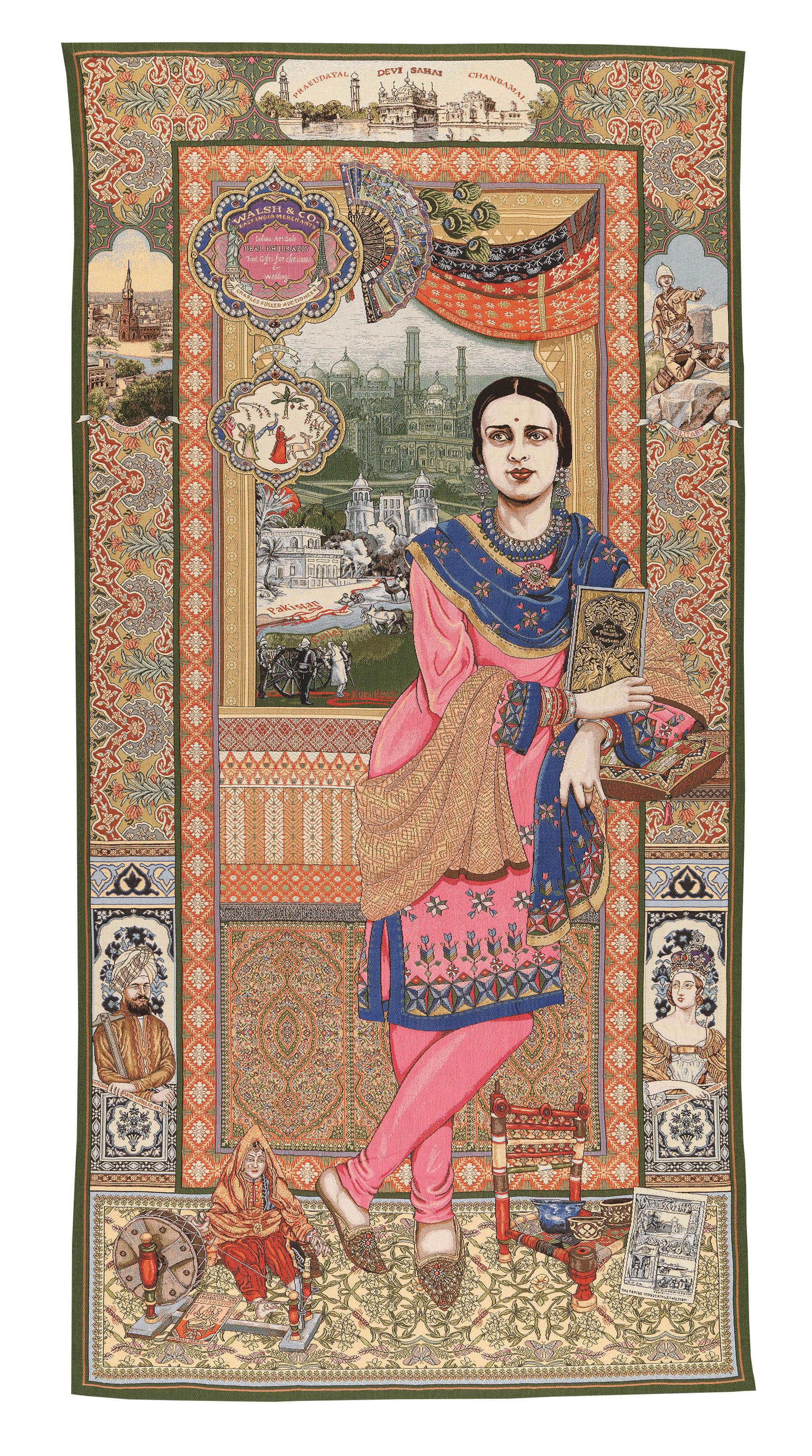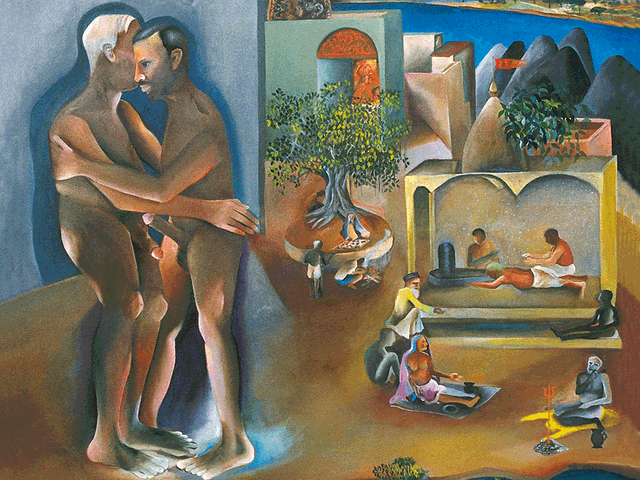I Will Meet You Yet Again offers a look at contemporary Sikh notions of “home”, grounded in more than 40 works contemplating thе culture of the world’s fifth largest religious community. Stemming from the spiritual centre of India’s Punjab region, the exhibition focuses on Sikh resilience and creativity across generations, genders and individuals, as artists respond to ongoing legacies of persecution and protest. In a reflection of the Fowler’s 60th anniversary theme of “Creating in Community”, scholars, artists and local religious leaders have curated the show around the organising concepts of sangarsh (struggle), basera (home) and birha (longing).

The Singh Twins' Phulkari: Craft and Conflict from the series Slaves of Fashion (2017) Courtesy of the artists and the Khanuja Collection
Colonial impact
To guide viewers through the complex themes of Sikh identity, I Will Meet You Yet Again features historical markers that group works around key events in the modern history of the religion. Beginning with the 1947 partition of India, works assess the impact of colonial rule on experiences of displacement from communities and heritage sites. Highlighted historical events, including protests, migrations and acts of state-endorsed violence, contextualise the works of Sikh artists, providing backgrounds upon which their creativity expresses itself. Helping viewers understand the foundations of Sikh spirituality and history is a secondary theme of the exhibition; its core aim lies in fostering a sense of relation and connection between the viewer and works on a more affective level.
“Many times, expressions of the interiority of our lives, such as those in the show, they’re not exclusive to a community. They’re universal, but still possess unique qualities in the nuances of how complex experiences are expressed,” says Sonia Dhami, a trustee of the Sikh Foundation and the exhibition’s co-curator, with Syona Puliady, the Fowler’s curator of textiles of the eastern hemisphere.
We run the risk of repeating the same narrative over again and telling a very simplistic storySonia Dhami, co-curator
Dhami adds: “In our quest to show the uniqueness of a community, we forego the larger and more significant narratives that are common ground for diverse communities. With this, we run the risk of repeating the same narrative over again and telling a very simplistic story. Questions like ‘who are the Sikhs?’, ‘what do they believe in?’, ‘what do they eat?’ can be Googled anytime these days. Here, it’s critically important to include the universal stories of love lost, home, desire, aspirations, so we can relate to each other as humans while getting to know the community.”

From Farmers Protests Graphics (2021) by Himanshu Dua and Nisha K. Sethi Collection of the artists
The exhibition includes several masterpieces of Sikh art, primarily by male artists from the late 19th century, yet does so in order to show how broad the Sikh experience has become in the past two centuries, expanding across continents and gender identities. As opposed to striking a balance between old and new, Dhami says she hopes that the more traditional works will help some Sikh viewers “feel a little more at home”, while “encouraging them to open their minds to what might not otherwise fit in with the narrative”.
Common motifs
In attempting to articulate a gentle inclusion of contemporary perspectives over an abrupt break with the past, the exhibition brings together a range of forms articulating common motifs that related to an expanding Sikh narrative. For instance, modern Punjabi poetry is included alongside visual works, with the exhibition’s title drawn from the pioneering work of the poet Amrita Pritam. “The title is not really about the poem, but the literal meaning of these words,” says Dhami, “that these things will happen again—the struggle to have a home, building a new one and longing for that which you have left behind. These things don’t occur in a chronological manner; they repeat themselves in our lives over and over again.”
I Will Meet You Yet Again: Contemporary Sikh Art, Fowler Museum, until 26 May



